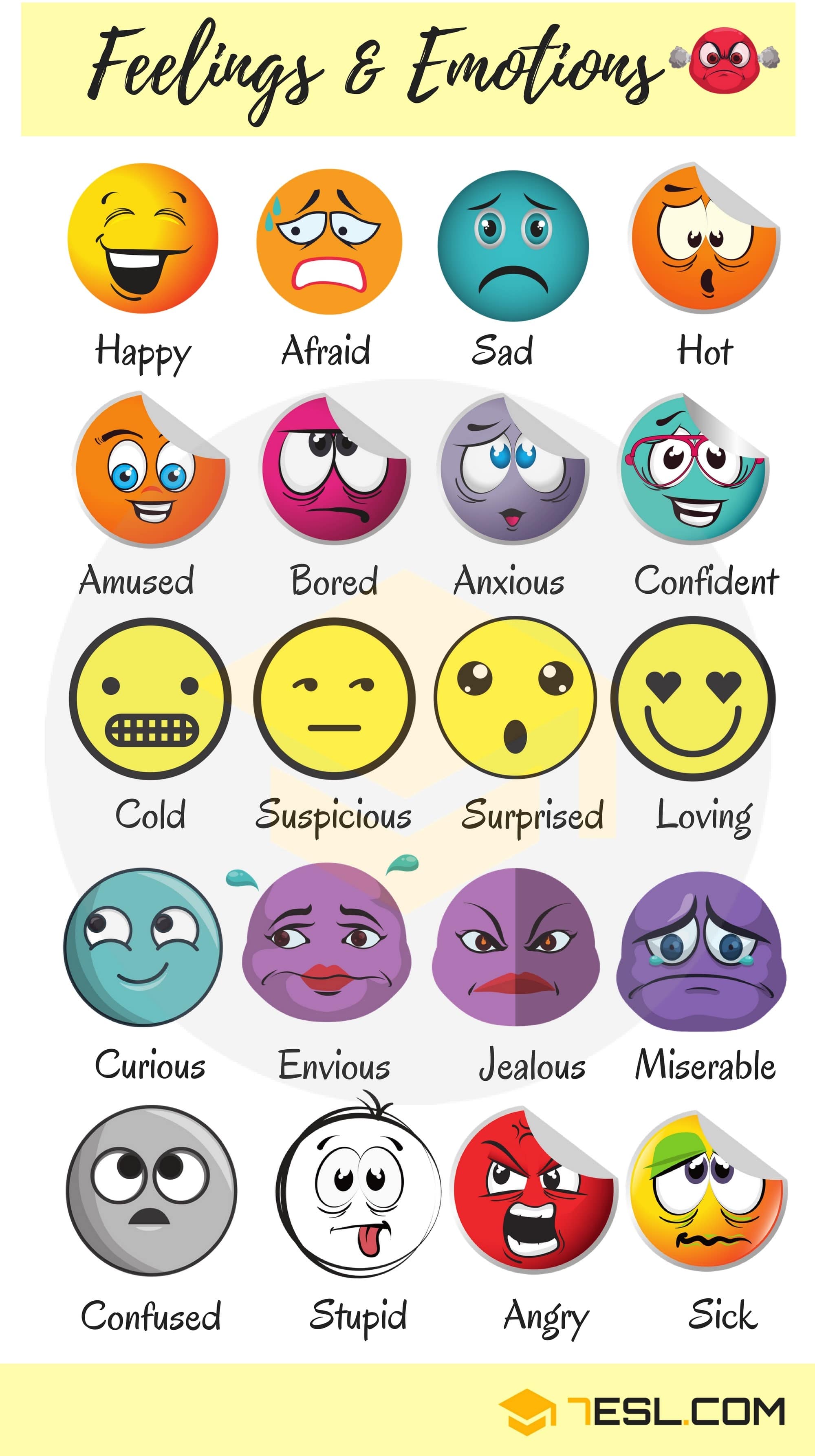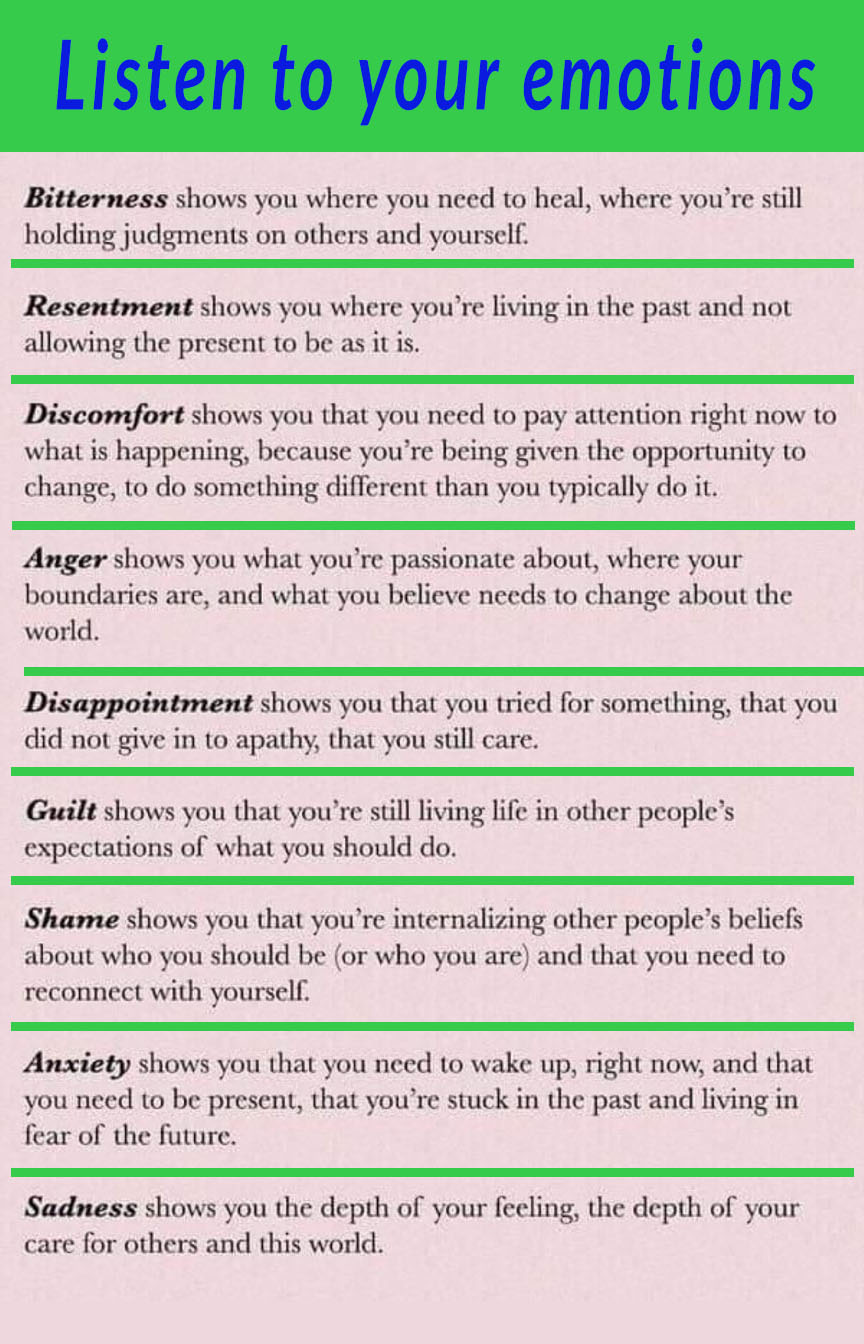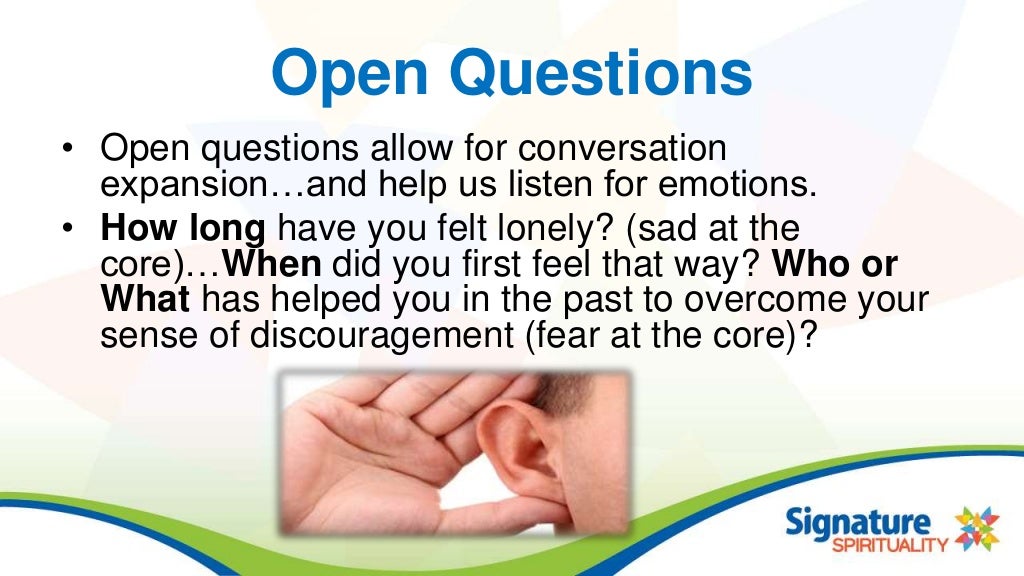Listening to emotions YouTube

emotionalintelligence mentalwellness psychology Active Listening
First one is "I feel…". Second one is "I need…". And third is "I will….". Step 1. I feel. "I feel" is where you name the emotion - a simple way of acknowledging it (instead of struggling with it or suppressing it). So here for instance, you might say to yourself, "I feel sadness.". Acknowledging the emotion helps us.

Why it's important to talk about our feelings and emotions
Listening to our emotions is a skill. Which means that if you don't have that much experience with processing your feelings or understanding them, you can learn. You can practice. Hannaford.

Unit 2 Listening for Emotions IELTS Listening skill
1. Something bad has happened unexpectedly and you are angry. 2. You were expecting a bad result, but it has not happened, so now you feel OK. 3. Someone has told you about a problem and you are not sure how to solve it. 4. You have finished something that has taken you a long time, which you have enjoyed. Question 4 of 20.

Listening to My Feelings by Michael Gordon
10+ minutes Independent Agreeing and disagreeing Listen to some conversations between two people. Decide if they are agreeing or disagreeing. B1-B2 5-10 minutes Independent Virtually Anywhere Episode 6 Do this activity to practise some of the useful language used in Virtually Anywhere episode 6 and improve your listening skills. B1-B2
:max_bytes(150000):strip_icc()/an-overview-of-the-types-of-emotions-4163976-abaafd59e7214706b7cd6326d0dd8257.png)
The 6 Types of Basic Emotions
The feelings and emotions vocabulary in the audio are happy, tired, silly, mad, scared, hungry, sad, excited, surprised and embarrassed. You can download this PDF to help guide you while you listen. Let me know what you think in the comments below or if there is another resource you need. I love creating new material. Take care for now.

How to Describe Someone’s Feelings and Emotions ESLBUZZ
Listen to the intonation to help you understand the speakers' emotions and how they feel. Do the speakers sound happy, sad, worried, frightened, annoyed, etc.? Voices are often high to express strong emotion, e.g. when we are excited, happy, frightened or annoyed. Voices are often low when we are bored or uninterested.

PPT Listening skills PowerPoint Presentation, free download ID2352246
This is a nice listening activity for higher-level students. Prepare a passage of someone talking about how they're feeling. Sprinkle in a number of the key emotion or feeling vocabulary words.. Emotion Charades: Students act out different emotions while others guess the emotion being portrayed. Feelings Vocabulary Gallery: Create a.

Pin on infographics for sped
Amy Gallo. Summary. Active listening requires mastering many skills, including reading body language and tone of voice, maintaining your attention, and being aware of and controlling your.

Listen To Your Emotions Emotions, Positive quotes, Listening to you
Emotions - Drag and Drop Exercise 1B; Emotions - Drag and Drop Exercise 1C; Emotions - Exercise 2; Emotions - Exercise 3; Emotions - Exercise 4; Listen. CLB 3-5. Talking about feelings; Talking about fear and anxiety; Saying sorry; Expressing shock; Expressing sympathy; Expressing disappointment;

List of Emotions in English 250+ Emotion Words Types of Emotions • 7ESL
I will listen through the words, fully and openly. I vow not to interrupt people. Say back to the speaker what they said to me, capturing the emotion. Leal also offers tips for empathic speaking, including organizing and clarifying thoughts prior to speaking, choosing words wisely, and expressing words with respect.

Are you listening to your emotions? Richard Grossi
Active listening meets emotional intelligence when we go beyond simply nodding at the right intervals. It is about actively recognizing and responding to the speaker's expressed emotions. Empathy development plays a crucial role in this process. It is not just about hearing words; it is about sensing feelings and understanding perspectives.

STOP Listening to Your Feelings! (If You Want To Keep Motivated) YouTube
Dec 2, 2021,11:01am EST This article is more than 2 years old. Share to Facebook Share to Twitter Share to Linkedin Are you simply communicating? Or are you truly connecting? Listening to the.

How to Talk About Emotions in English Feeling Words and Emotions
Hey, I'm Christy Wright, and this is my podcast channel. I'm a best-selling author, keynote speaker and business coach. I'm also a mom to three kids, a dog, and a hamster that I regrettably agreed to get my oldest son for his birthday. Most of all, I'm a storyteller and teacher. I love using stories…

English listening practice Talking about Emotions YouTube
Empathic listening—or empathetic listening—is rooted in compassion that involves much more than just listening to people's words. This powerful skill focuses on understanding the emotions and meaning behind what people say (as well as what they might not be saying). "Empathic listening is an art.

Emotions [listening English level 1] YouTube
Level: Elementary. Language: English (en) ID: 54580. 11/10/2019. Country code: ES. Country: Spain. School subject: English as a Second Language (ESL) (1061958) Main content: Feelings and emotions (2013195) Listening exercise to practice feelings and emotions vocabulary.

Listening For Emotions
To cut off this addiction, a helpful first step is to get into the practice of noticing when you're feeling an emotion, and labeling it. By creating a clear formulation of your experience, you.